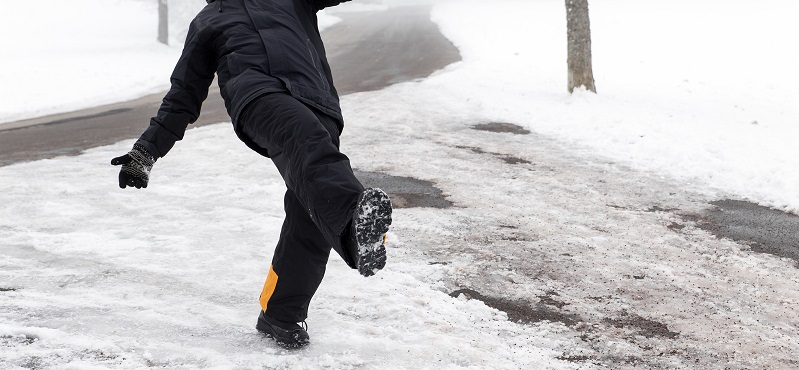Preventing & Treating Back Injuries From Slipping On Ice
Category: Spinal Cord Injury | Author: Stefano Sinicropi

Winter weather is almost here to stay, and that means snow and ice will soon be covering our sidewalks and walkways. Even when we’re careful, snow and ice can cause problems when we walk, and it can even lead to injuries. When people slip on ice, one of the most common places to land is on their back as their feet fly out in front of them.
Landing on the cold, hard ground with your spine can lead to a number of different injuries, so today, we’re going to explain what to do if you’ve injured your back in a fall, and how to prevent these accidents from happening in the first place.
Avoiding Spine Injuries From Ice
The easiest way to prevent spine injuries is to be cognizant of the conditions and to make some smart plans. Some tips to prevent slipping on the ice and injuring your back include:
- Invest in quality winter boots or footwear with adequate grip.
- Watch where you’re stepping.
- Put down the cell phone and focus on each step.
- Use handrails when climbing ramps or steps.
- Remove snow and ice from sidewalks, stoops or driveways before it can melt and freeze.
- Avoid running. Take it slow!
Treating Spine Injuries After A Fall
Despite your best efforts, you still may end up slipping and falling in the winter. It happens to the best of us, even when we’re proactively trying to stay on our feet. So what should you do if you fall and land on your back?
For starters, when you’re on the ground, assess the situation. If pain is severe to the point that you can’t get up, try to signal to someone nearby that you need help. If pain is moderate or severe but tolerable, try to regain your footing and make your way to a safe location. Once in a safe location, assess your pain. Odds are it will begin to dull, but if it remains severe for more than an hour, or it gets worse, your best bet is to see a doctor.
If pain seems to be dulling, you can watch for symptoms and take over-the-counter pain medications for the next few days as the soreness wears off. However, if you need to visit a doctor, here’s what will likely happen. They’ll begin by conducting a physical exam and by asking about the accident and your symptoms. They’ll likely have a pretty good idea what’s going on based on this conversation, but they’ll probably want to confirm their suspicions with an imaging test.
An x-ray or another imaging test will be completed, and this will allow your doctor to confirm a diagnosis. From there, they can walk you through an individualized treatment plan that may include some of the following options – medications, rest, physical therapy, bracing, stretching techniques or surgery. In most cases, surgery is not necessary, but it does typically yield great results if needed.
For more prevention or treatment tips if you slip and fall on your back, reach out to Dr. Sinicropi’s office today.